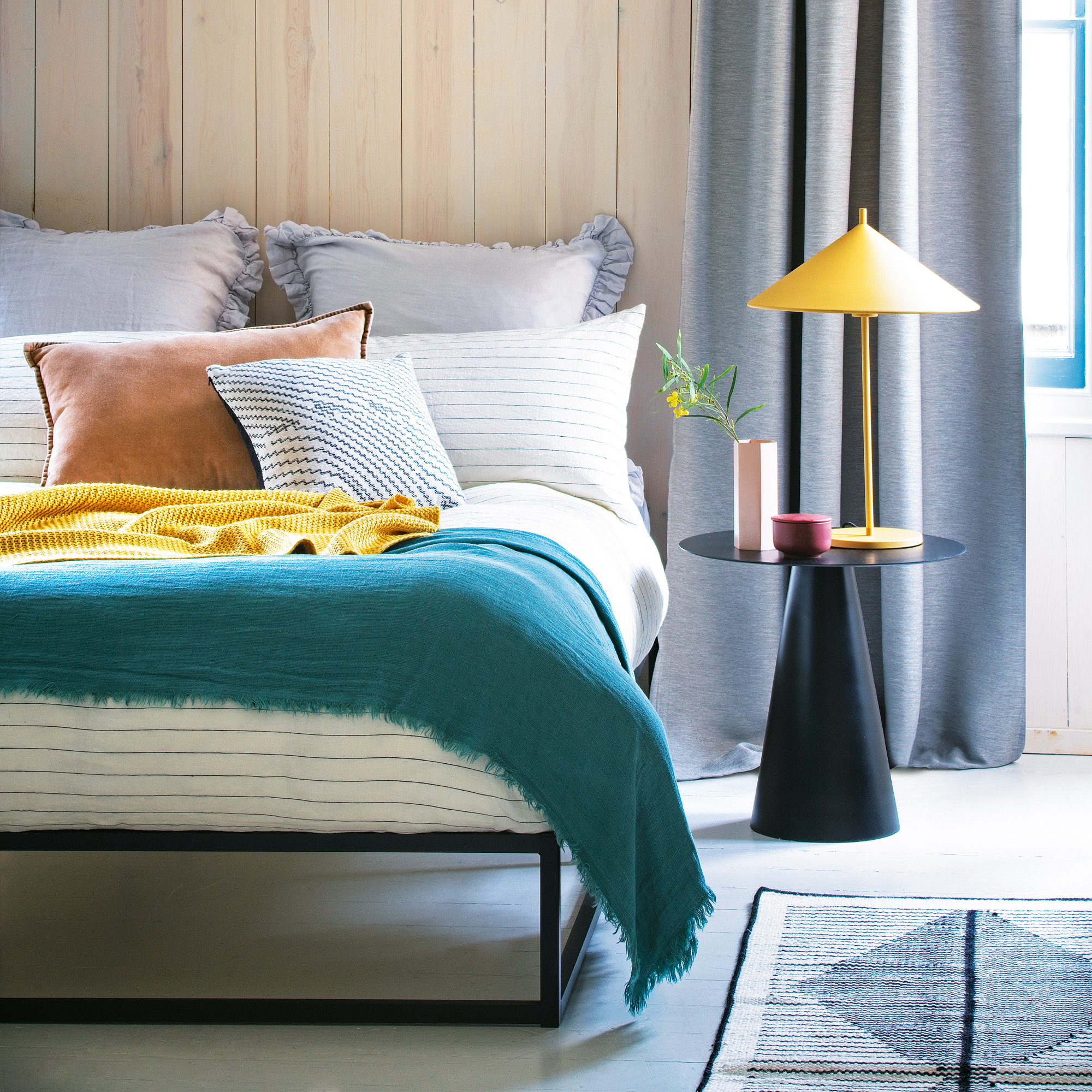
Has another night of sneezing, coughing and rubbing itchy eyes left you at your wits end? Then let's start with a preemptive 'bless you', before we hopefully make it all better with our top tips for sleeping with hay fever.
As any sufferer knows, a summer bedroom can feel less like a sanctuary and more like a battleground, as 'pollen bombs' (a Met Office term for sudden increases in pollen due to warm weather) strike. And sadly, there are more sufferers than ever prevented from getting a better night's sleep.
According to the NHS, hay fever affects up to 1 in 5 people at some point in their life, and there is currently no cure. In fact, the number of people developing an pollen allergy is only set to rise, say studies by the University of East Anglia.
So what can you do to relieve the effects of hay fever, particularly in bed? We've asked some well-placed experts – including Dr Bhavini Shah, a GP and Lloyds Pharmacy Online Doctor for medical advice, and best-selling author and TV cleaning guru Lynsey Crombie, AKA the Queen of Clean – for their go-to solutions. And we've also approached bedding and tech experts to find out what bed linen and gadgets can alleviate your symptoms.
1. Clean and vacuum daily
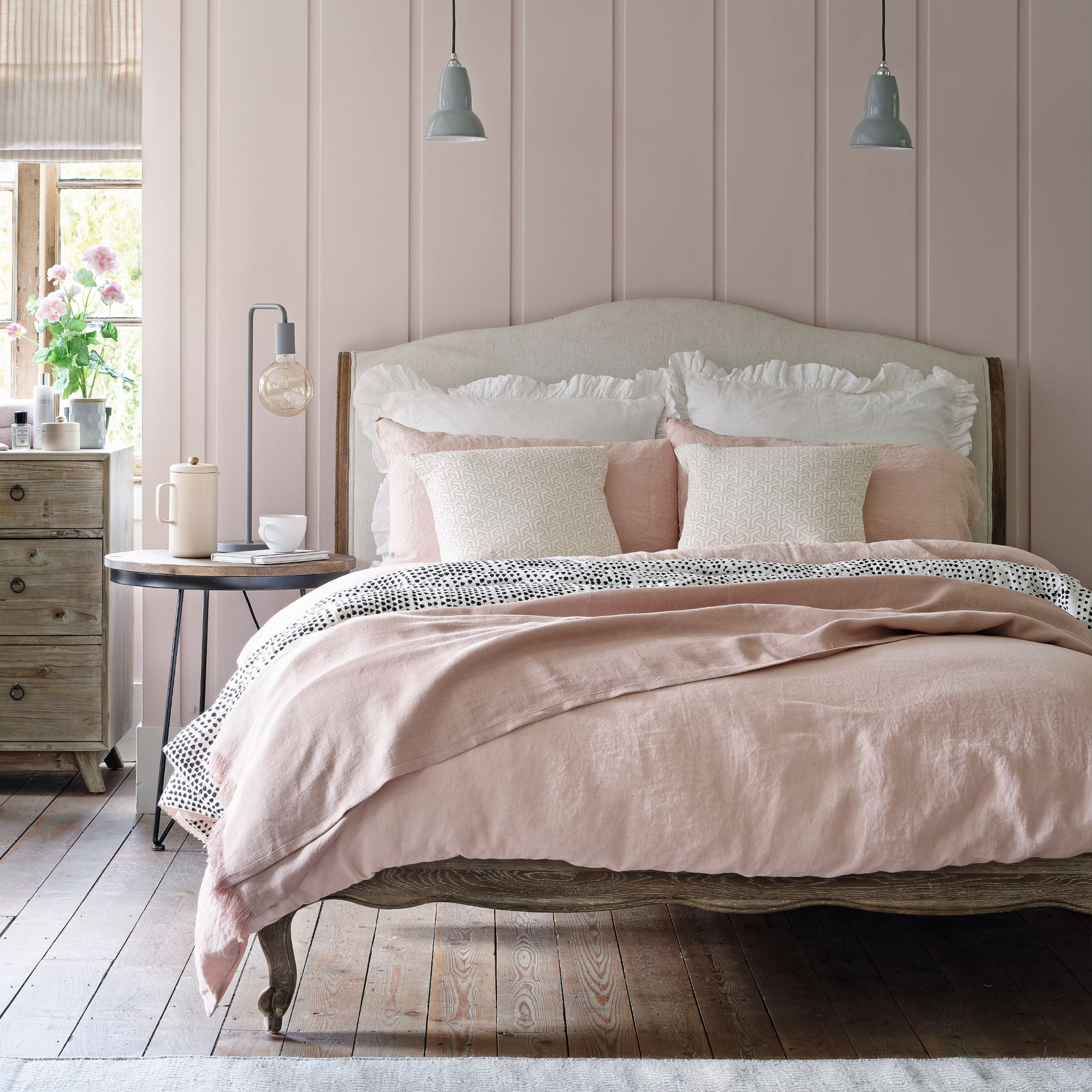
Our first tip is a relatively easy one to put into practice. 'It's really, really important to vacuum daily,' Lynsey Crombie tells us. 'Don’t forget to clean under your bed, too.'
'Regular vacuuming and dusting with a damp cloth can help remove pollen from your room,' agrees Dr Shah. 'Using a HEPA filter in your vacuum cleaner can help to trap extra pollen particles.'
It's also worth vacuuming upholstery and your mattress on a regular basis, the best vacuum cleaners should all come with an upholstery attachment. 'Regularly vacuuming the mattress can help to keep allergens at bay,' says Robert Lancaster Gaye, co-founder of bedding company Tielle Love Luxury. 'Ensure the filter in the vacuum is as clean as possible though, otherwise the dust and dirt can simply blow out of the other end.'
if you're looking for a lightweight vacuum for your bedroom, we recommend the Shark Stratos IZ420UKT stick cleaner, currently £447, Amazon. It will pick up pollen, pet hair and dander and has an 'Anti-Allergen Complete Seal', which promises to capture and trap 99.9% of dust and allergens inside the vacuum, not releasing them back into the air.
However, if you suffer badly from allergies, you may prefer a bagged cleaner. As vacuum bags are sealed when you come to remove them, no dust or airborne particles are released back into the air, so you're less likely to trigger allergies. The Henry Allergy HVA cylinder vacuum cleaner, £199, Amazon, is a great pick.
2. Choose hypo-allergenic bedding
Choosing the best pillows and best duvet can play a big part in managing hay fever symptoms, as bedding materials can affect exposure to allergens.
'Many people choose synthetic pillow and duvet fills because they believe that feathers will aggravate their allergic reaction. However, it’s not the filling that causes the reaction, but the allergen-friendly conditions. Allergens like warm, dusty spots,' says Robert Lancaster Gaye.
'Natural materials, such as down and feather, are often recommended for hayfever sufferers due to their natural, hypoallergenic properties,' say Emily and Jonathan Attwood, founders of bedding company Scooms. 'These natural options have the added benefit of being excellent at regulating temperature and moisture, helping to reduce the conditions that dust mites thrive in.'
This is important because, according to Robert, changes in body temperature can lead to us producing 500ml of perspiration per night. 'Feather and down pillows naturally absorb and release moisture into the atmosphere, so they're a great choice,' he says. 'However, certain microfibre and recycled fills can be just as breathable.' He recommends Tielle Love Luxury’s hypoallergenic Comforel pillows, from £32.
An alternative to feather and down is wool bedding, many on the Ideal Home team have a woolroom duvet and mattress protector and while they are investment bedding they are naturally hypoallergenic and wash well.

Aside from fillings, its important to look at your pillow and duvet's casing. 'A high-quality pillow and duvet fill enveloped within a tightly woven case will create a barrier that keeps the bed as allergen free as possible, whatever its filling,' he says. Robert recommends looking for Nomite® certification, which all his brand's pillows and duvets carry. 'It's the gold standard for anti-allergy bedding,' he says. 'Taking its name from "no mite", the tight weave fabric stops allergens from passing through.
If you don't have the budget to invest in new pillows, at least invest in a pillow protector, you can pick up a pack of 2 pillow protectors for just £14 at Marks and Spencer. 'Zipped pillow protectors are a must-have for every allergy-free home,' says Robert. 'Firstly, they’ll keep anti-allergy pillows clean and fresh, which means you won’t need to wash and replace your pillows as frequently. Secondly, they stop dust mites and other allergens from getting into pillows and spoiling sleep.'
3. Buy cotton sheets and wash them frequently

Our experts agree that cotton sheets are always best for hay fever sufferers. 'For your bed linen, again we'd always advise natural materials such as Egyptian cotton or linen over synthetic fibres. These are more breathable and allow for better airflow, reducing moisture and dust mites, too,' says Emily.
'100% cotton is soft, cool, breathable and moisture wicking,' agrees Robert. 'This makes it especially suitable for those with allergies as it allows the skin to breathe.'
But how often should you wash your bedding? 'Your bed sheets should be washed at least once a week – duvet and pillows every 6 to 12 months,' says Emily.
Lynsey Crombie agrees: 'Wash at a minimum of 60 degrees to kill dust mites and reduce allergies and ensure any laundry is completely dry before putting it back on your bed, as dust sticks to damp surfaces.'
'You’ll also want to avoid drying your bed linen or any clothes you wear to bed outside as they can catch pollen,' says Dr Shah.
4. Invest in a latex mattress
If you have hayfever the best mattress to invest in is a natural latex mattress, recommends Robert. 'The inner cavity of innerspring mattresses can create an incubator for house dust mites and other allergens, whilst memory foam mattresses can lead to overheating which can increase skin dryness and irritation,' says Robert. 'Natural latex mattresses are resilient and resistant to house dust mites, mould and mildew, making them a better choice for those with allergies.'
If you aren’t able to replace your mattress, however, Robert points out that there are some things you can do to help:
Turn your mattress: 'Most modern mattresses boast ‘do not flip’ labels. This is because they don’t have to be flipped like they did years ago, when the quality and sturdiness wasn’t there,' he says. 'However, turning the mattress 180 degrees so that the head end is at the foot of the bed, can really help to manage allergens. As a rule, beds are shared by people who aren’t the same size and weight, so evening out the mattress interior will help to ensure a less hospitable environment for allergens.'
Invest in a mattress topper: 'A mattress topper will sit between the mattress protector and the mattress, to add a layer of comfort for that hotel sleep experience and an additional layer of protection,' says Robert.
5. Declutter your bedside tables
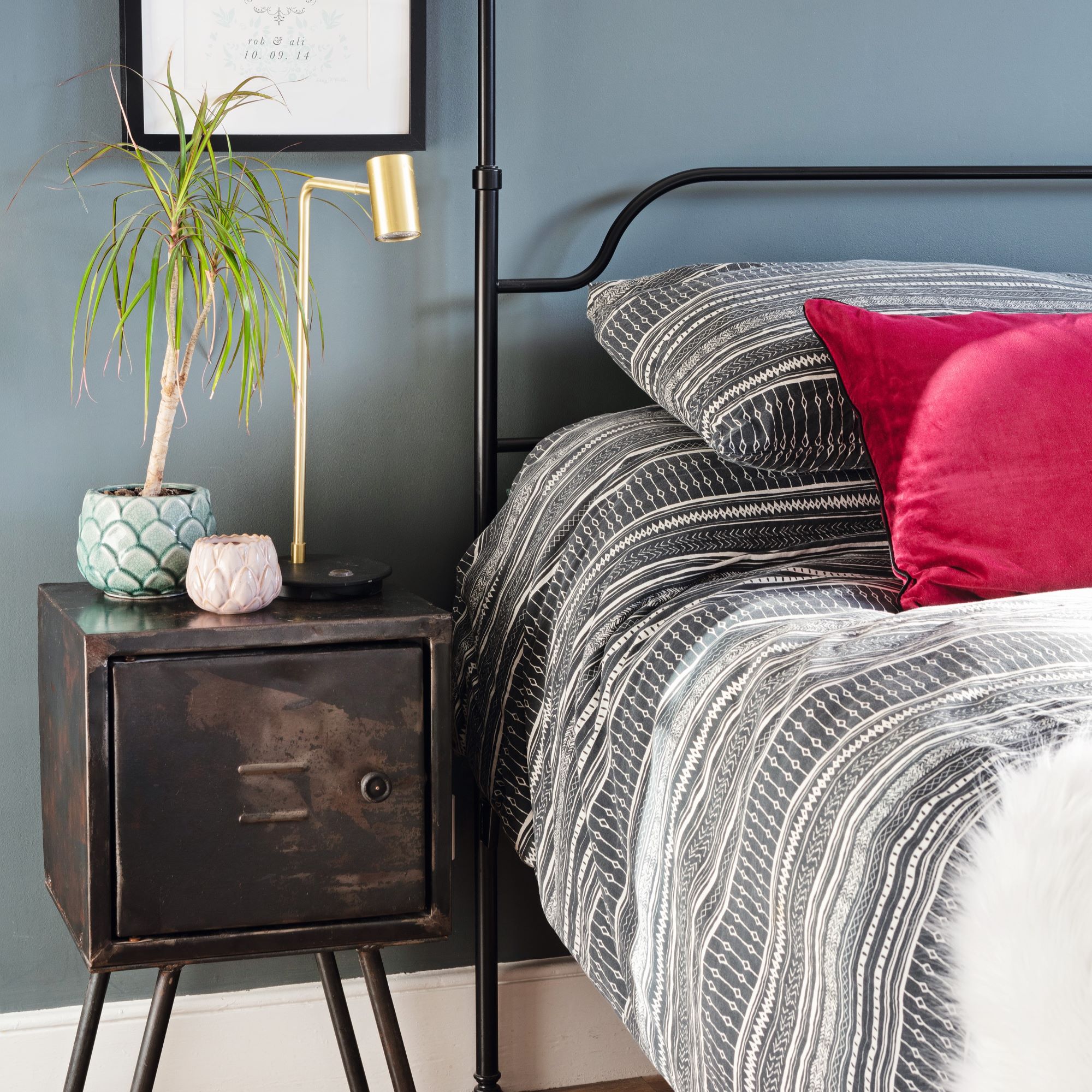
If you're anything like us, your bedside table will be a small but busy surface, piled high with bedtime reading, beauty products, charging paraphernalia, water glasses and more. But as Lynsey points out, 'All that clutter gives pollen places to settle and build up'.
She advises keeping those surfaces as clear as possible with a bedside table declutter, and giving them a regular wipe down. 'Using eco, fragrance-free cleaning products will help to avoid trigger allergies,' says Lynsey.
And of course, always use common sense when it comes to the items you do keep by your side when you sleep. 'Fresh flowers can contribute to hay fever so ensure you don’t have any of these in your bedroom if you suffer from it,' says Dr Shah.
6. Bring in an air purifier
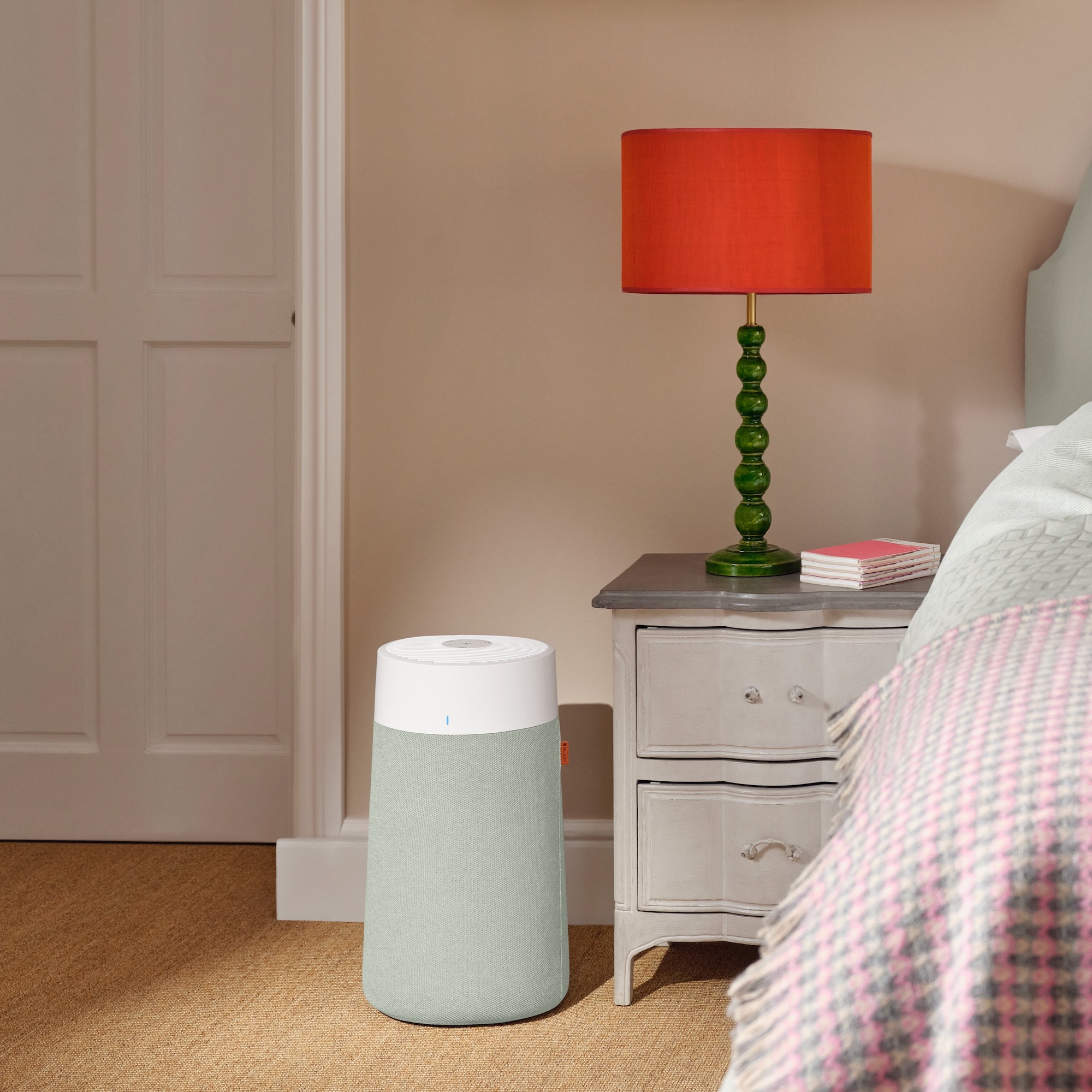
The opening and closing of windows can be a vicious circle for hay fever sufferers over summer. You want to keep them closed to keep that pesky pollen out, but if your room is already full of it, you want to make sure it can escape.
'Most exposure to allergens happens while you are sleeping or when pollen that clings to fabric is disturbed while making your bed or when simply moving about the room,' explains Lars Dunberger, technology development manager for Blueair. 'Opening the window for ventilation may therefore feel like a good idea.'
'However, pollen can easily come back indoors through the window and attach itself to fabric which can be a struggle to remove,' he continues. 'This is where using an air purifier can help. It will trap irritable PM10 and allergens before they have a chance to settle, alongside other microscopic pollutants from the air, when opening a window isn't possible. And an air purifier with HEPASilent™ technology is so quiet that it won’t keep you awake.'
Our best air purifiers round-up should help you decide which model is right for you – though we do rate the BlueAir Blue Max 3250i as our best overall pick with prices starting from £99.
7. Make your bedroom a pet-free zone

It can be hard to resist our furry little friends' urge to follow us up to bed each night. But if you're struggling with hay fever symptoms, you really must.
'If you have pets, avoid letting them into your bedroom,' says Dr Shah. 'The issue is that they can carry pollen indoors and up to your sheets.' And even if they are banned from your bedroom, it's still a good idea to regularly bathe pets who spend a frequent amount of time outdoors, so you're not introducing more pollen and dander to the atmosphere.
8. Shut windows and switch to shutters

As we've mentioned, pollen likes to cling to any fabrics – including your bedroom curtains. And since it can be hard to remove without very frequent washing and vacuuming, if you're really suffering, you could consider switching your fabric window dressing for shutters.
'One of their benefits is their ability to repel allergens,' says Mark Carter, director at Shutterly Fabulous. 'As opposed to fabric curtains, their louvres can be angled to facilitate air flow. This helps to prevent an overload of dust, pollen grains and other allergens from entering your home. Furthermore, our plantation shutters are available in painted hardwood or waterproof polyvinyl. This makes them very easy to wipe clean.'
9. Create a separate dressing room
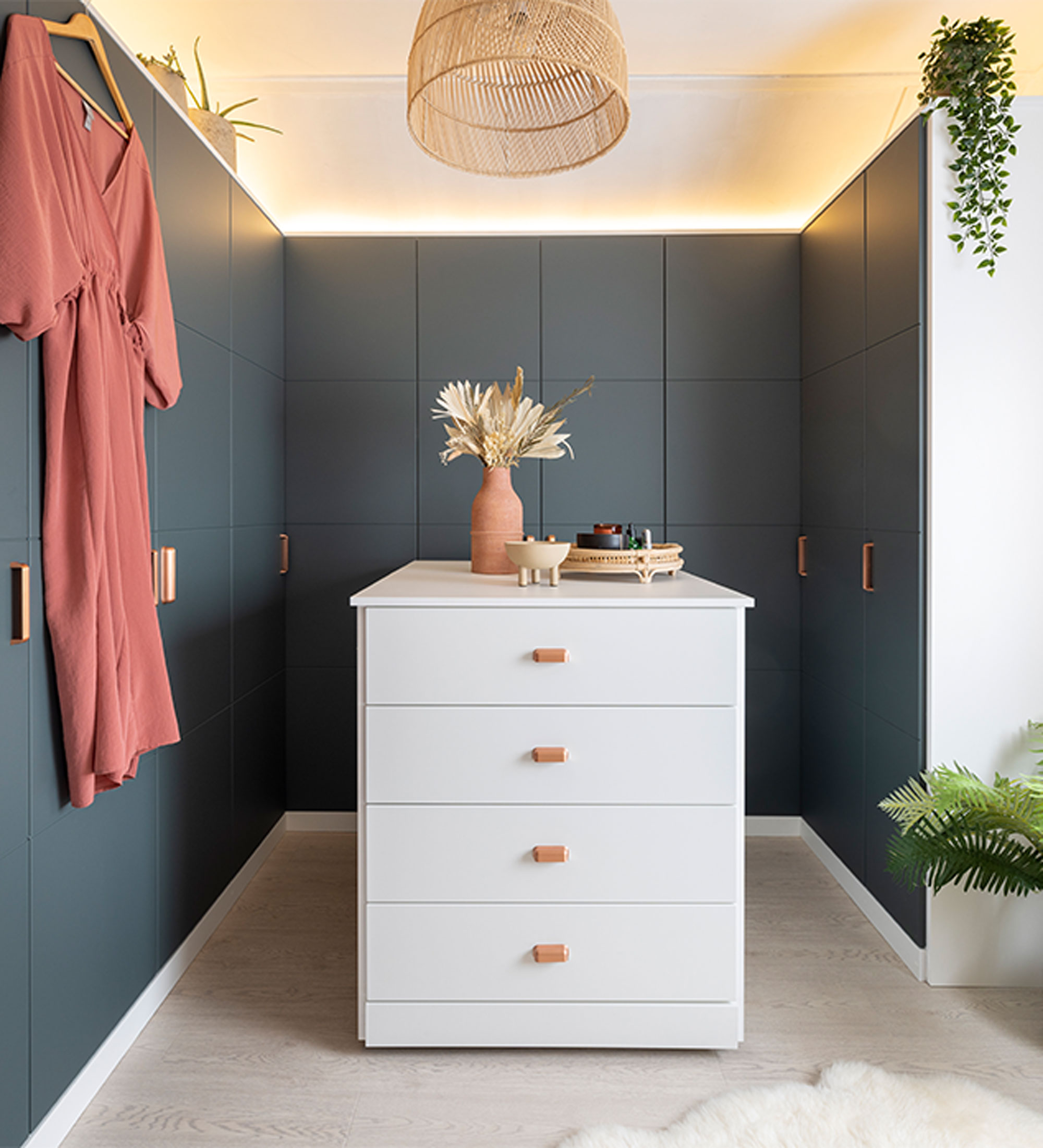
Any hay fever sufferer that's long dreamed of a walk-in wardrobe, en-suite bathroom or separate dressing room has a valid excuse to move up that makeover.
'A good way to keep pollen out of your bedroom is by showering and changing your clothes after you’ve been outside. This will help to wash off any pollen,' says Dr Shah.
And if you can do so without bringing these clothes into contact with your main sleeping area, all the better. Undressing in a separate room will make sure worn clothes can't contaminate the area around the bed, and storing your clothes separately means that any line-dried clothes that have been in contact with pollen wont either.
FAQs
Is hay fever worse in bed?
'The severity of hay fever depends on various factors including where you live, what type of pollen you’re allergic to and the time of year,' says Dr Bhavini Shah. 'But some people do find their hay fever is worse at night. One key reason you may find your symptoms are worse at night is because the pollen count can be higher at this time of day.'
'It may also be that there is a particularly high concentration of pollen in your bedroom,' Dr Shah continues. 'For example, we know pollen can attach to fabrics such as curtains and bed linen. This can explain why some people experience more intense hay fever symptoms when they’re in bed.'
'And although less common, sweats can be a symptom of hay fever. This symptom in particular is likely to be exacerbated at night when you’re covered by a duvet.'
How do I stop hayfever at night?
Our top tips, above, should hopefully alleviate your symptoms. But if your suffering persists, you should seek medical advice. 'Sleep is important so if you have hay fever and it’s affecting your sleep, a pharmacist may recommend antihistamine drops, tablets or nasal sprays, or steroid nasal sprays,' says Dr Shah. 'If these don’t work, it’s worth speaking to your GP, who may suggest prescription hay fever treatments.'
Dr Shah has one more last hack that might help, too. 'A top tip I’d suggest is putting a small amount of Vaseline around your nostrils before you go to sleep,' she says. 'This prevents any pollen in the air from entering your airways.'







